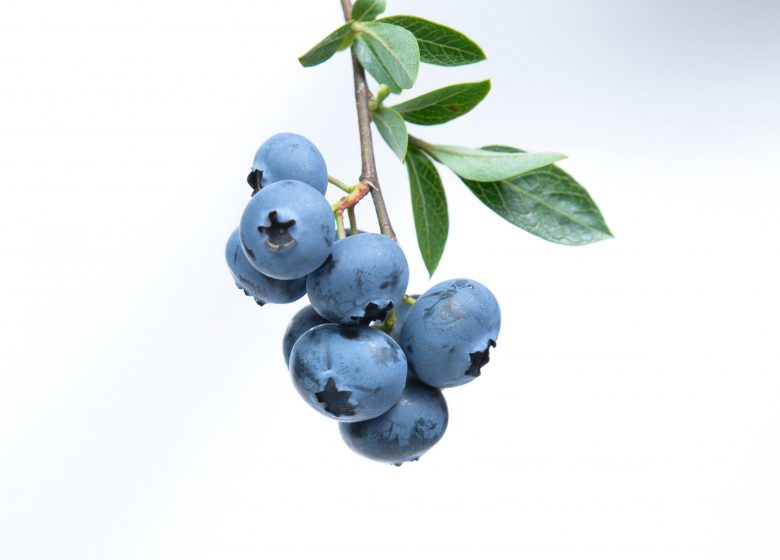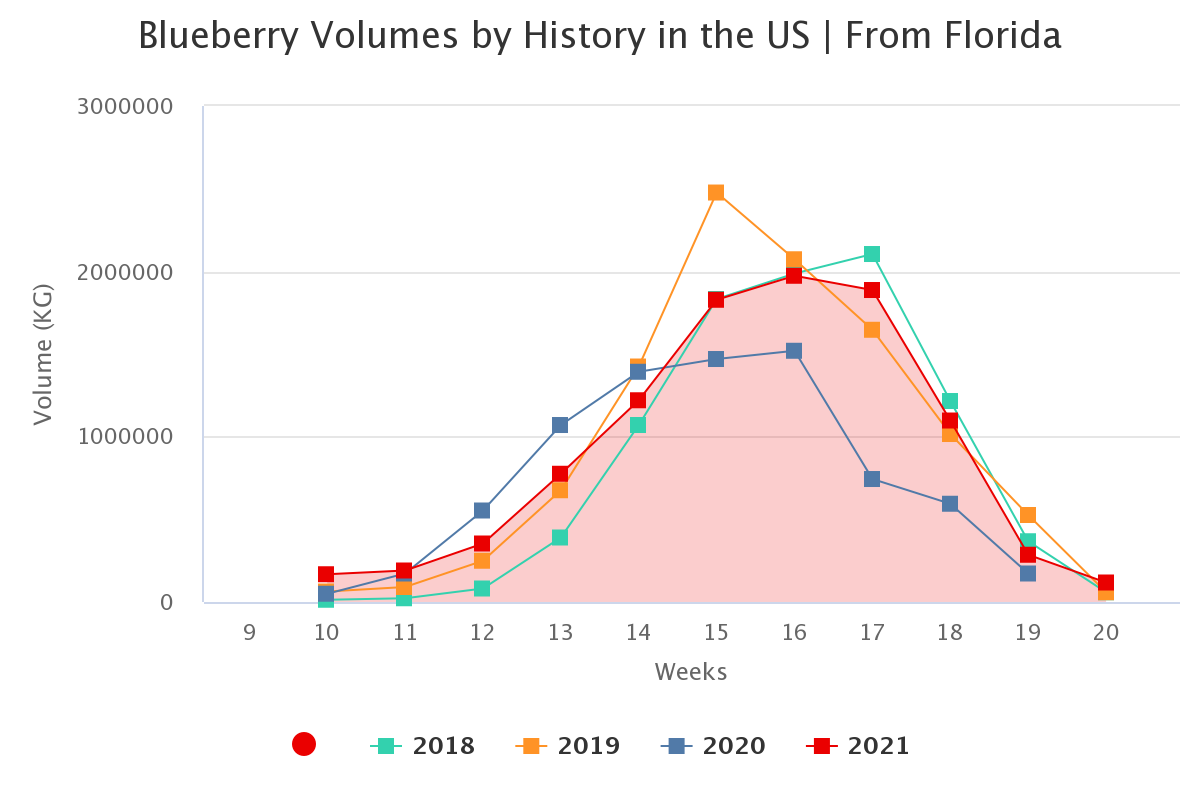How Florida’s cold temperatures affected its blueberry crop

Overview of blueberries in the U.S. market, complemented by charts from Agronometrics. Originally published on February 09, 2022.
Following the cold temperatures that hit Florida the first weekend in February, Florida’s blueberry growers are still assessing how well their crops made it through.
“Florida growers experienced significant cold temperatures several nights in a row–most growers are reporting minimal damage. But in some instances, the weight of the ice did cause breakage,” says Brittany Lee of the Florida Blueberry Growers Association based in Gainesville, FL. “We do not expect this to impact our state production and look forward to a solid year.”
The concern for Florida’s blueberries was tied to the cold snap that was part of the winter storm on the U.S. East Coast the first weekend of the month. “Temperatures were very cold early Sunday and Monday mornings, reaching as low as the mid-20s F on Sunday morning in some Florida locations,” said Patricio Munoz, UF/IFAS blueberry breeder and associate professor.

Source: USDA Market News via Agronometrics.
(Agronometrics users can view this chart with live updates here)
How cold is too cold?
That said, experience gives Florida growers the knowledge that green fruit and blueberry flowers can survive temperatures as low as 26 F. “However it depends on other weather conditions including wind and dew point,” says Munoz. “Blueberry floral tissues are most sensitive to cold damage at the full bloom stage, with young green fruit only somewhat less sensitive.”
Due to very warm temperatures that took place in December, many farms throughout Florida did have flowers and fruit at those very stages. That made freeze protection important to maintain fruit production.
Munoz said that almost all blueberry growers in Florida used freeze protection, largely through overhead water irrigation systems. “Overhead irrigation warms the fields with well water that is warmer than the air temperatures which forms a protective layer of ice on the plants,” says Munoz. “When water changes from a liquid to a solid form it releases a certain amount of heat, and good, uniform ice coverage helps keep the plant tissues from dropping below damaging temperatures.”
The News in Charts is a collection of stories from the industry complemented by charts from Agronometrics to help better tell their story.
Access the original article with this (Link)






